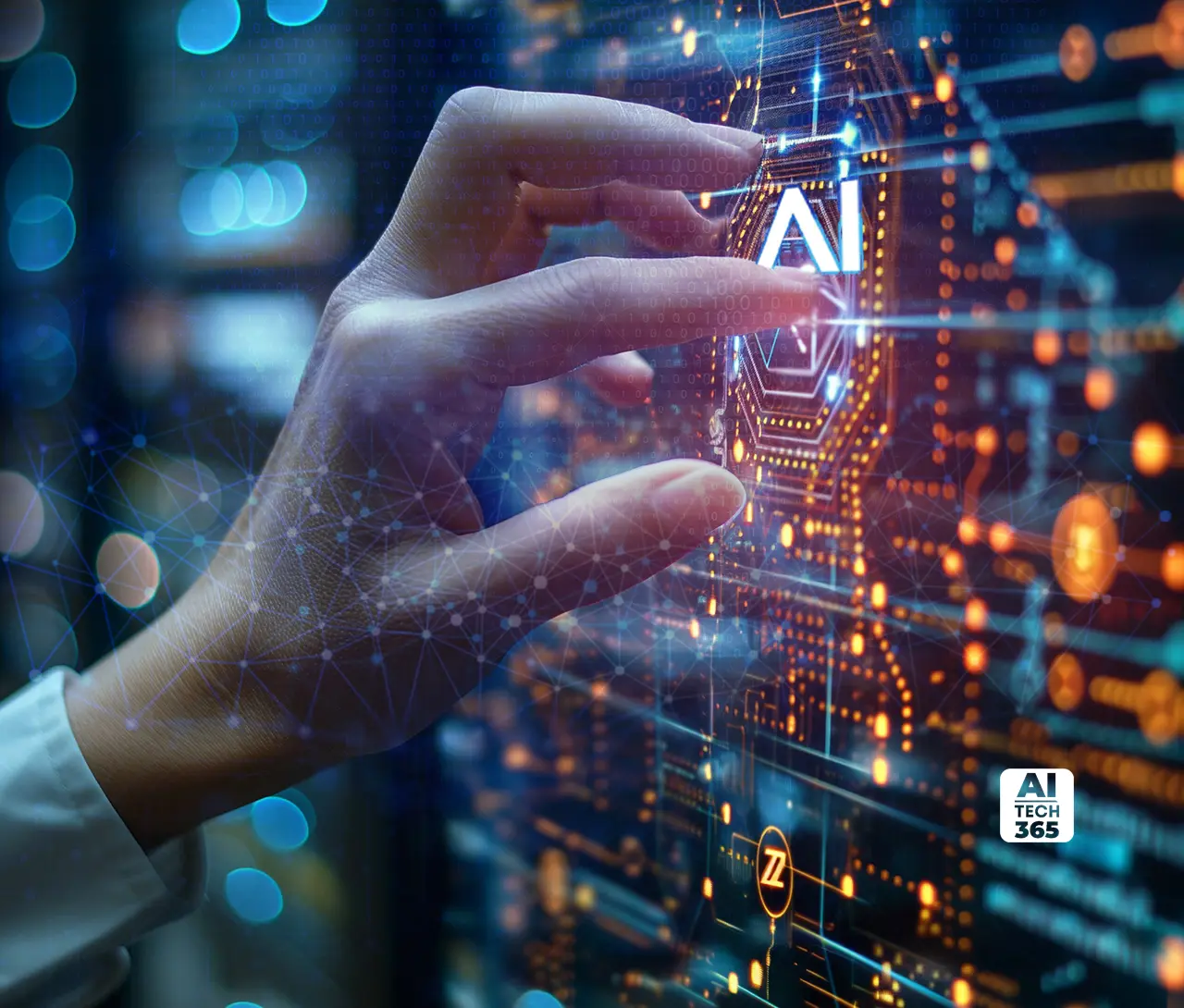Enterprise innovation has hit a wall. Most organizations are still stuck in systems that reward maintenance instead of reinvention. Enterprise AI innovation changes that. It isn’t another tool in the tech stack. It’s becoming the operating system for how the next generation of value will be created. The real challenge isn’t about building one good model; it’s about building a system that keeps creating new ones.
The way to achieve this is written in this playbook. It is a thorough guide to innovation for the business and technology leaders that are ready to transform their disjointed experiments into a repeatable and scalable one. The playbook brings up the formation, processes, and instruments that are needed to change AI from a collection of separate projects into a vital business power.
In the State of AI Infrastructure Report 2025, 98% of the organizations are witnessing generative AI, and 39% have established it in production. The race has clearly started.
The Strategic Foundation for Shifting the Mindset
Let’s be honest. Most enterprises are still playing safe with AI, running endless proofs of concept that die quietly in a corner. It’s time to stop treating AI like a playground of disconnected trials. The real progress happens when companies start linking their work through clean data pipelines, shared feature stores, and deployment systems that everyone can rely on. That’s when AI stops feeling like a side project and starts running as part of the business core.
But that kind of shift doesn’t happen by luck. It needs leaders on the same page. The CTO and CIO have to decide how much risk they’re ready to take, where the money flows, and how easily data moves across departments. If they pull in different directions, innovation just slows down.
And when success gets judged only by model accuracy, the story’s half told. Look at real business outcomes such as time to model launch, cost of failure, and net new revenue from each AI initiative. McKinsey’s latest global survey shows 78 percent of organizations now use AI in at least one business function, up from 72 percent last year. That’s the sign of a shift in motion. Enterprise AI innovation isn’t about algorithms anymore. It’s about building the muscle memory for continuous, scalable transformation.
Phase 1 – Discovery, Prioritization, & Team Structure
Most companies rush into AI without asking the basic question: what’s actually worth solving? The smart ones start with an innovation funnel. They look for areas rich in data, heavy on repetition, and measurable in impact. Think supply chain optimization or hyper-personalized marketing. Every use case goes through a simple filter called the Innovation Charter. If a use case doesn’t tackle a real business problem, if the data is out of reach, or if it can’t be built within six months, drop it. That kind of focus saves time, money, and a lot of frustration down the line.
Once that filter is set, the next move is structure. Building AI muscle isn’t about a fancy lab hidden in a corner. The best model is the Hub and Spoke. The central hub or Center of Excellence owns the MLOps standards, tooling, and core research. The spokes sit within business units, for example a manufacturing VP paired with a data scientist, so innovation stays grounded in real operational challenges. This setup keeps experimentation alive but aligned with business needs.
When ideas start flowing, not everything deserves attention. That is where the prioritization matrix comes in. Picture a simple two by two grid mapping impact against feasibility. Always start with projects that rank high on both. These quick wins create early success stories and build internal credibility. The tougher, high-impact but low-feasibility ones can sit in the R&D pipeline until the timing is right.
That is how a company moves from scattered AI trials to a steady flow of focused, scalable wins. Discovery is not about hoarding ideas. It is about creating a system that keeps spotting value faster than the rest.
Phase 2 – Building the Acceleration Workflow
Once the ideas are sorted, it’s time to make them move. The speed of innovation depends on how ready the data is. Most companies still waste days fixing the same data over and over. Teams sit in silos, cleaning files that should already be clean. That’s the first trap. The fix is to build a feature store. Think of it as a shared library where every team can find versioned, ready-to-use data. No more repeating work. Everyone pulls from the same trusted source. It saves time and gives people a head start when they start building.
After that comes the real game. Prototyping. That’s where ideas turn into something testable. Low-code or no-code tools work best here. They let domain experts test ideas fast without waiting for the data science team. The loop is simple. Come up with an idea, build a prototype within a week, test it, check what works, tweak it, and run again. The faster this cycle runs, the better the learning curve. It’s not about building one perfect model. It’s about improving a little with each round.
But speed alone isn’t enough. What matters is how these prototypes turn into working systems that scale. That’s where MLOps steps in. Treat every model like software. Automate training, testing, and deployment so no one is manually re-running scripts or moving files. Each new code push should trigger a fresh model check. That’s how you keep models updated and reliable.
IBM’s results show what happens when this workflow runs right. The transformation of the company driven by AI opened up productivity benefits of nearly USD 4.5 billion. Not via a single huge project, but via a well-organized, continuous system that kept on improving itself.
This is how AI turns into a living process. Clean data at the start. Quick prototypes in the middle. Automated scaling at the end. Once that rhythm settles in, innovation doesn’t feel like a project anymore. It becomes part of how the business works every day.
Also Read: How Tesla Uses AI to Optimize Manufacturing and Marketing
Phase 3 – Scaling, Governance, and Sustainable Impact
Once the prototypes start showing results, the next step is scale. This is usually where most companies slow down. The problem isn’t the model itself. It’s the system it has to fit into. Real progress happens when AI connects with what already keeps the business running. That means smooth links with ERP, CRM, and other core systems. The easiest way to make that work is by building everything with an API-first mindset. It helps models connect across teams and tools without creating new roadblocks.
Getting the model into production is only half the job. Keeping it healthy is the other half. Over time, the data in the real world changes. That shift quietly affects how models behave. It is called data drift and concept drift. You need proper monitoring to catch it early. Regular checks show when the model starts to slip and help fix it before anyone notices a drop in accuracy.
Then comes the governance layer. This is where trust begins or ends. Every organization needs clear policies for data use, access control, and bias checks. Ethics is not a side note anymore. Before any deployment, make sure the data trail is visible and that user consent is clear. Transparency is what makes people believe in the system.
Next is explainability. Understanding is a prerequisite for trusting and thus it is very common that people do not trust what they cannot understand. SHAP and LIME are some of the tools which can explain the reason behind the model’s specific performance. Such transparency demystifies AI and eventually, business heads are able to use it actively and with assurance.
Finally, measure the results that matter. Look beyond single projects. Track how AI lifts performance across the organization. Faster delivery, fewer mistakes, and better returns tell the real story. Keep sharing that story with the leadership team.
Deloitte’s Tech Trends 2025 report puts it simply. AI is becoming part of daily business infrastructure, the way electricity or the internet once did. It’s not a futuristic idea anymore. It’s how the modern enterprise runs.
Sustaining the Innovation Engine
The real shift in this playbook is about moving from small wins to a system that keeps producing them. It’s not just about building smarter models; it’s about building the structure that lets innovation run on repeat. MLOps keeps the process fast and stable. The Hub and Spoke model spreads the skill where it’s needed. The system is made truthful and reliable through governance. They jointly make AI a growth driver instead of a mere sideline project.
The figures are already talking very loudly. The increase in enterprise AI demand across the globe was the main force behind NVIDIA’s announcement of a whopping full-year revenue of 130.5 billion dollars, which is a 114 percent rise. That’s proof of where the world is heading.
Enterprise AI innovation isn’t a finish line. Skill set, mindset, habits, all converge into guiding business operations and continuously create value.


